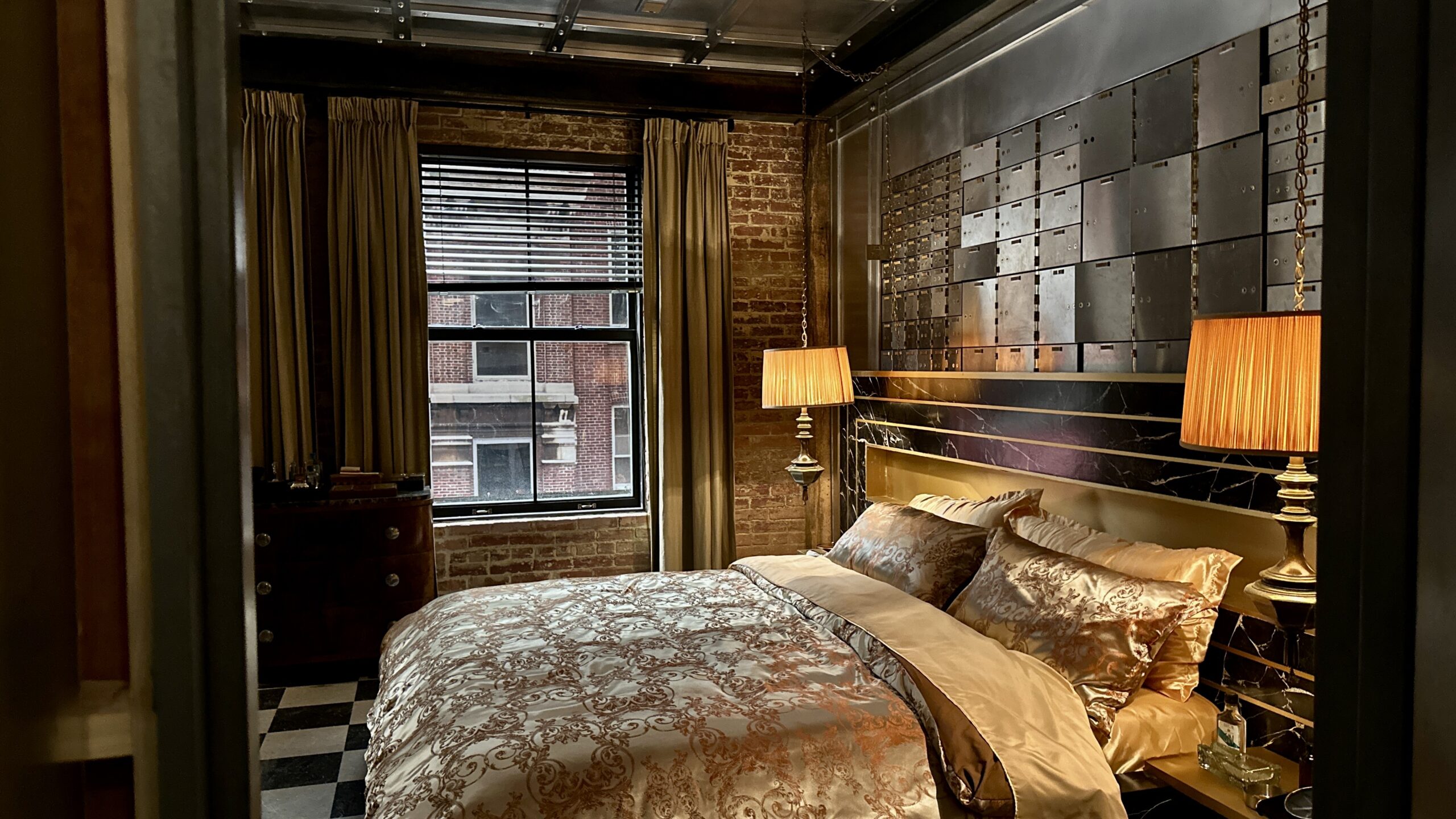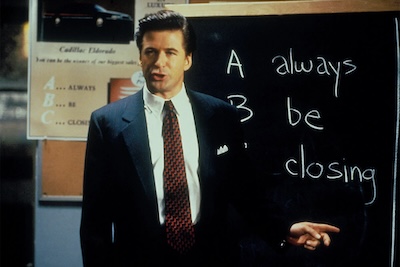The Contending sits down with Kalina Ivanov, the production designer for HBO’s critically acclaimed limited series The Penguin.
Kalina Ivanov is the Emmy-winning production designer who was brought on to give life to Gotham City for HBO’s The Penguin. The Lauren LeFranc-developed series follows Oswald “Oz” Cobb (a.k.a. The Penguin) who was first introduced in Matt Reeves’s The Batman. Following that film, The Penguin documents Oswald’s (Golden Globe and SAG Award-winner Colin Farrell) rise to power in Gotham City’s criminal underground. Cristin Milioti co-stars as Oswald’s chief rival.
Here, in an interview with The Contending, production designer Kalina Ivanov (Grey Gardens) provides intricate details for Gotham City overall and for the intimate living spaces of its citizens. Ivanov and I also had a fun conversation about where book media is currently and how to make it better. Finally, we both appreciate the use of the term “hounds of Zeus.”
The Contending: How much did the movie The Batman inspire you in how you wanted to make Gotham look?
Kalina Ivanov: The film is very beautiful, in fact it was the first film I saw coming out of COVID, in a movie theater. So it was really great that it worked out that I ended up designing Gotham for this. It was familiar but also quite different for us because we were in New York and the film had been shot in London, so the architectural language was different. What was freeing though was Matt Reeves gave us permission to reimagine Gotham, and he said that he was inspired by the film The French Connection. Once I knew that I was able to take it into that direction, using the vernacular of the subways, always being under a subway or under an arch. The arches became an overwhelming theme that allowed me to ground the show in that world of Gotham as well as making my own Gotham. The other thing was we avoided anything that had to do with Manhattan, anything that had parallel streets or a grid was never used. Instead we looked for five or three corners, always that kind of geography. It was very interesting because the show ended up being shot in Queens, the Bronx, and Yonkers, all the less familiar areas of New York.
The Contending: Oz’s apartment I found very fascinating, and I saw you referred to it as “he has bad taste.” It reminded me of someone who has come from poverty and this is his version of what he thinks wealth is. So, what went into making that very distinct place for him?

Kalina Ivanov: His place was scripted to be in the Diamond District and that is one location that we did do in Manhattan. The Diamond District was of course where they sell gems, specifically on the first floor. The second floor are the stores you go to when you want to repair jewelry. So when I was doing the research I stumbled upon a vault that the repair shop had, and that gave me the inspiration for setting Oz’s bedroom inside of a vault. I thought it is what a poor person would think a rich person would want–these shiny walls. Also it is close to his character, the way he compartmentalizes everything, and there all these compartments in this bedroom with all these hiding places, so I thought it was appropriate for the character. Then the relationship with Colin (Farrell) was so wonderful, he gave us samples of bad paintings and we used the purple one. I put an ad about the repair shop from the 30s in the apartment as well. Very few people have noticed it, but it is there right above the photo of the twins. So we definitely gave the places specificity.
The Contending: As a contrast to that, at the end of the show he has this Penthouse apartment, and the thing that really stood out was that it’s big but very empty. He has his mother in that one empty room looking out, and even the downstairs does not have much in it. What went into creating his new place?
Kalina Ivanov: From the very beginning Lauren LeFranc, our showrunner, has talked about the progression of Oz. At the beginning of the show he lives on the third floor and at the end of the show he’s on the top floor. But when he gets there it is not quite what he expects, and that was important for us because of the relationship with the women in his life. Originally I was supposed to build it as a set and that’s what I did, but we had a lot of budget constraints so I went to look and see what we could find in the real world. The most important thing was the windows, so I was trying to find anything that had fantastic windows and I could work with that. I had created a hotel already because I thought I was creating a set, so that asset was already there for special effects. I didn’t want to deviate too much from it, and what they found was a penthouse under construction so it was an empty box. So we brought in the columns, the murals, and all the detail for the space to make it look like it was an old ballroom that was divided in half that he was restoring. So we will see where he goes from here. It gave us a wonderful palette to work with, and I also wanted him to be surrounded by women, so I used the hounds of Zeus (the harpies), really pissed off women, all staring at him. It came together really beautifully. If I showed you where we started with a blank canvas and then what we did with it you would be amazed.
The Contending: I loved that you used the term “hounds of Zeus” for the harpies. I don’t hear that as often.
Kalina Ivanov: That was what I said to Lauren. “How do you feel about the ‘hounds of Zeus’?” And she said, “About what?”
The Contending: So as a fan of Batman, one of the sets I found interesting was Arkham Asylum, because usually it’s portrayed as almost a Gothic looking place. It appears sinister to outsiders because of who we know is inside. Here we see Arkham through the patient’s eyes, and that this is grimy, and we see them abusing their patients. What went into crafting this iconic place?
Kalina Ivanov: Arkham was already created in the movie, so that was the one set I had to duplicate. But we took some liberties in terms of the geography of the corridor and how it wove around. The cells themselves are directly like they are in the movie, and it looked like they used a dark gray color but it turned out to be green actually. It was the processing that they used that transformed the colors. But Arkham for me was very emotional when you got to the women’s wing, because that is where Sophia is being held. We spent a lot of time working on how she would reveal the wallpaper underneath. It was interesting and very emotional overall.
The Contending: One of the biggest set pieces is the Falcone mansion, which is this gorgeous place and a testament to the power of the Falcones, and yet there are so many tragic things that happen inside that house. There’s probably more death in that place than anywhere else in the entire series. Did that play any role in how you designed it?
Kalina Ivanov: I didn’t know about all the deaths in the beginning. I had only read two scripts in the beginning, and there isn’t a lot of death there yet. But it was one of the first locations that we found with the location managers team. I knew that the Falcones had to live on the equivalent of Long Island, and I knew I had to evoke The Great Gatsby. I wanted something Italian but slightly more sinister, and I think we found it. Matt wasn’t convinced that it was the perfect location in the beginning because it was the first thing I showed him. But I was very insistent. I said, “You are not going to find a better one than this.” And we came back to it and it ended up being our location. All of the interiors we built on stage though (with a few exceptions) with the inspiration ending up being a villa on Lake Como, with the big mural that sits behind every master of the family. I’m really proud of that one.
The Contending: Was it interesting when we got to see it all burn later?
Kalina Ivanov: Oh yes!
The Contending: One other place that really got me is the apartment Oz moves his mother into. It’s obviously a building and room that has been damaged by the flooding, but it is livable and you can see signs that it still has personality. How did you create that contrast?
Kalina Ivanov: The place belonged to Calvin, who is friends with Vic at the beginning, who gets killed in episode 1 during the torture scene in the greenhouse. Calvin’s family is Polish and they live in Crown Point, and we knew we had to have a big scene in Crown Point anyways. We knew that the building would have no power at that time due to the flood, but that didn’t mean that the Polish people who had lived there had been negligent. They had been a loving family, and I wanted to create the history of that whole family, using Catholicism, the Pope, and giving them all those specific details was very important to us. It was a worn out place but it was a warm place because a family had lived there, very proud but poor. If you like that place it’s a testament to the backstory we gave them.
The Contending: I saw that your next project is The Peacemaker. Are you getting more interested in comic book shows after The Penguin? I am assuming it is very different to the work you did on The Penguin?
Kalina Ivanov: Very, very different. Peacemaker is no Penguin; he is his own hero. I don’t treat them as cartoon characters, I treat them as real people, and while in this show he happens to be called The Penguin I treat him as Oz Cobb.
The Contending: The groundedness and the greediness of the show is why it moved beyond what people assume you’re going to get with comic book media.
Kalina Ivanov: Exactly! Yes, in that sense I think that it’s a good thing they reached out to a designer that is known for doing grounded work. I really wish that people would do that, reach outside of the norm and not just go to all the comic book designers, and you can get results.
The Contending: A lot of comic book media has not been doing as well, and I think part of it is not putting that extra effort into it. That is why I thought The Penguin was a good idea for a show. For one, I thought The Batman was so good, and you can easily get to the second movie, and you can just see that he’s in charge, and the show just shows how we got there. You may not need that to understand the second movie but it is a great advantage.
Kalina Ivanov: Exactly. Giving the history to the character is what drives me and drives my design. It is all there on every set, it tells you the history of the place in this show.
The Contending: Final thoughts?
Kalina Ivanov: Enjoy the show!









